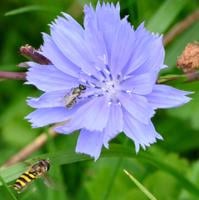Just about everyone has heard of the American beaver.
A humongous rodent, the American beaver (Castor canadensis) cuts down trees and dams up streams. The furry brown creature, often represented by plush toys, has long been a favorite of my sister, Laura. The beloved children’s author Thornton Burgess immortalized the beaver in one of his Bedtime Stories books, “The Adventures of Paddy Beaver.” Suffice it to say, people have a soft spot in their hearts for the beaver.
But the beaver is not universally admired. Their ability to cut down trees and dam up streams can also cause a great deal of damage to roads, bridges and trees that people have worked hard to build and protect. Flooding behind a beaver dam can be extensive and invasive, while the potential failure of a major dam can threaten roads. Beavers might be nice as an idea, but they can sometimes become a concern if they decide to do their thing in an inconvenient place.
Whether you love beavers or not, I think it is fair to say that they are extremely interesting animals. Their abilities and instincts are rather amazing and their physical adaptations to an aquatic lifestyle are noteworthy. But the important thing to remember is that there is a great deal of variation in the species and many beavers are entering the time of year that will determine if they are going to make it through the winter.
Beavers are the second-largest living rodents, after capybaras.
As mentioned before, the beaver is a very large rodent. This is a very large order in the mammal class and the physical attributes that place an animal in this taxonomic group are the teeth. A rodent has two incisors on the upper jaw and another two on the lower. This by itself would be a diagnostic feature, but what really makes them interesting is the teeth grow continuously throughout the animal’s life. This is an extremely important adaptation to a life spent chewing and gnawing on things.
UNIQUE INCISORS
Even more fascinating is the fact that the teeth have a very special sequence of layers that allows them to be self-sharpening. Human teeth are made of a relatively soft material, “dentin.” To protect them from wear, human teeth are encapsulated in a much harder layer of enamel. If properly cared for, the enamel can keep teeth intact and healthy for decades.
Beaver incisors are also made of dentin and enamel, but these two materials occur in two discrete layers. The front of each tooth is made of enamel and the back of each tooth is dentin. As a result, the back of each tooth wears away faster than the front, which can produce an impressively sharp edge like one that might be found on a metal chisel. Every time a beaver bites into a tree, its teeth sharpen themselves for the next bite.

Trees come down, dams are built and ponds form where before there had only been fields or forests. Beavers are the great engineers that generate habitat for untold numbers of wildlife and plant species, but why do they do it? Why go through all of this trouble anyway? Well, it all boils down to food. Beavers are vegetarians and they need a steady supply of fresh food during the winter. The dam building is just a clever way to ensure a stash of fresh greens, but it is a plan that comes with certain risks.
SURVIVING WINTER
In order to survive the winter months, a beaver must build a lodge in a pond. The lodge will be somewhat conical in its design and it will have one large chamber inside. The only way to get to this single large chamber is through an underwater tunnel. A beaver lodge is a safe place that can get quite warm and allow the animals to spend the winter in comfort.
The food situation is solved by taking dozens and dozens of freshly cut tree branches and jamming them into the soft mud at the bottom of the pond. But the peril comes when a pond is built and the water isn’t quite deep enough. If things go right, the pond will freeze and the beavers will be able to exit their lodge, retrieve a fresh branch, and bring it back into the lodge where the edible parts can be consumed. If things go wrong, however, the tops of the branches can become frozen into the ice and the retrieval process can become difficult. Furthermore, a shallow pond might not allow the storage of enough food in the first place and beavers can’t easily cut down frozen trees in the winter.
RISKY BUSINESS
A young beaver working on its first dam, or an older beaver that is out pioneering and decides to give it a try in a marginal location might spend the entire summer cutting trees and damming water only to discover (too late) that things are not going to work. In that case, the result is death; a lesson that is as hard as it gets. Every day, on my way home from work, I pass by a beaver pond that was just such a failure. The pond was too small, too shallow and surrounded by the wrong sorts of trees. Whoever lived there died last winter and there has been no sign of activity this fall. Being a beaver can be a risky business.
